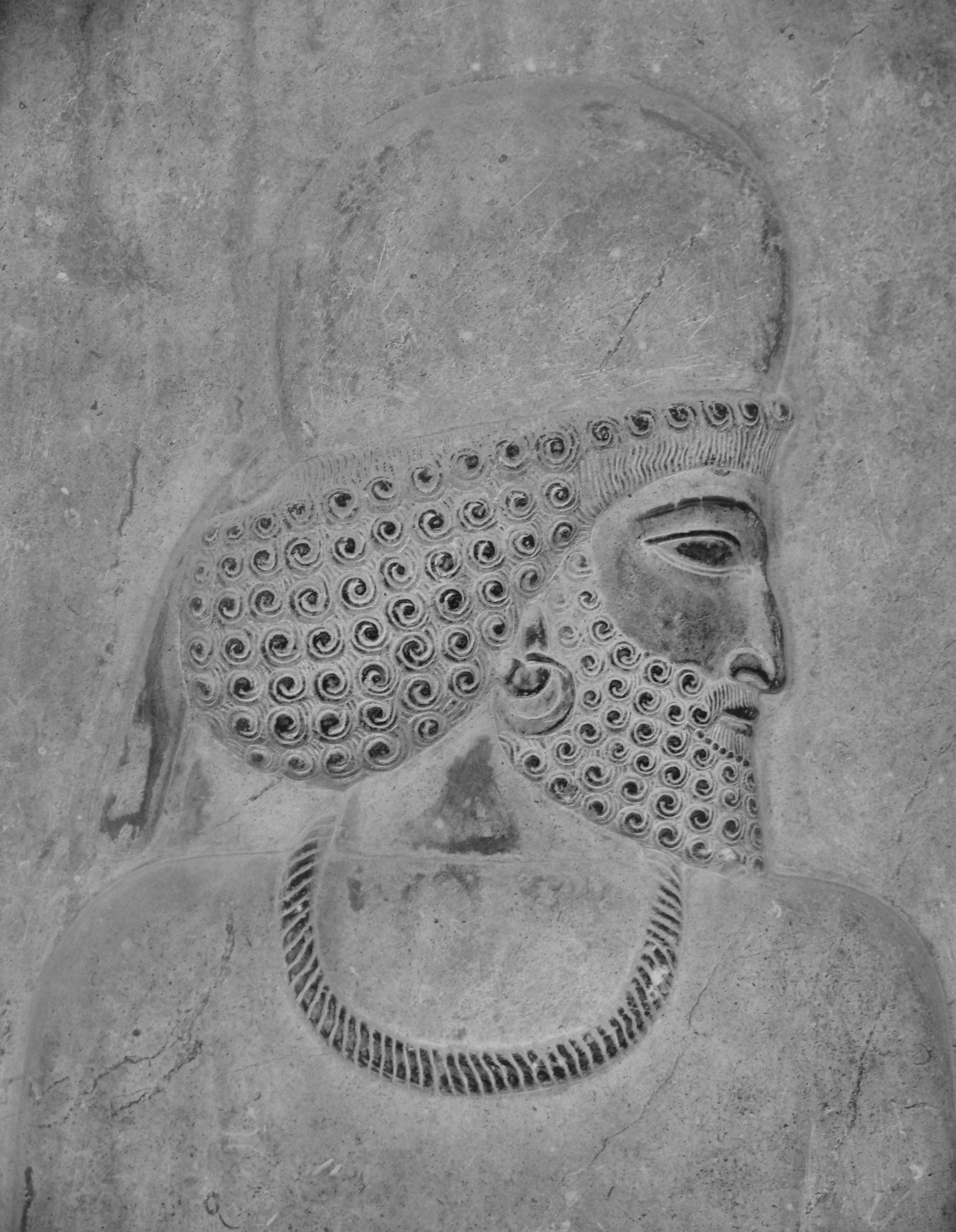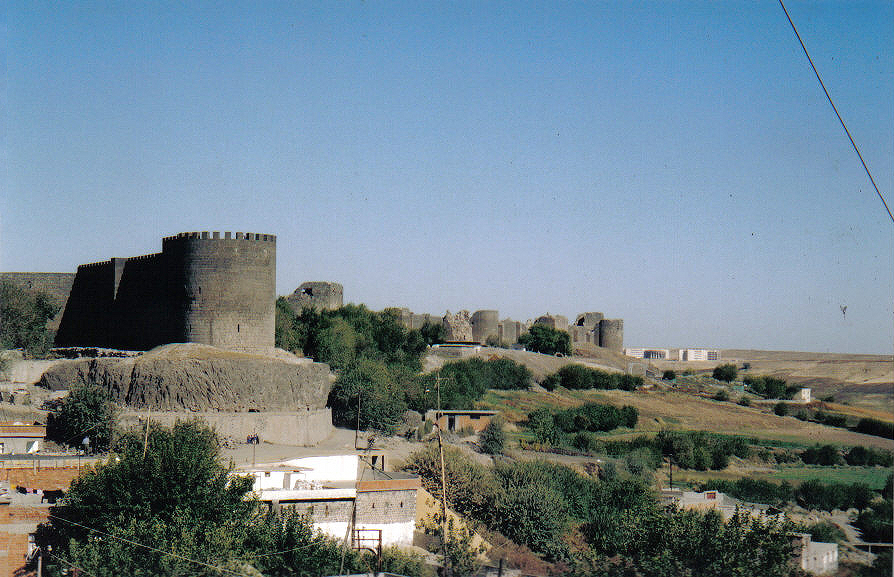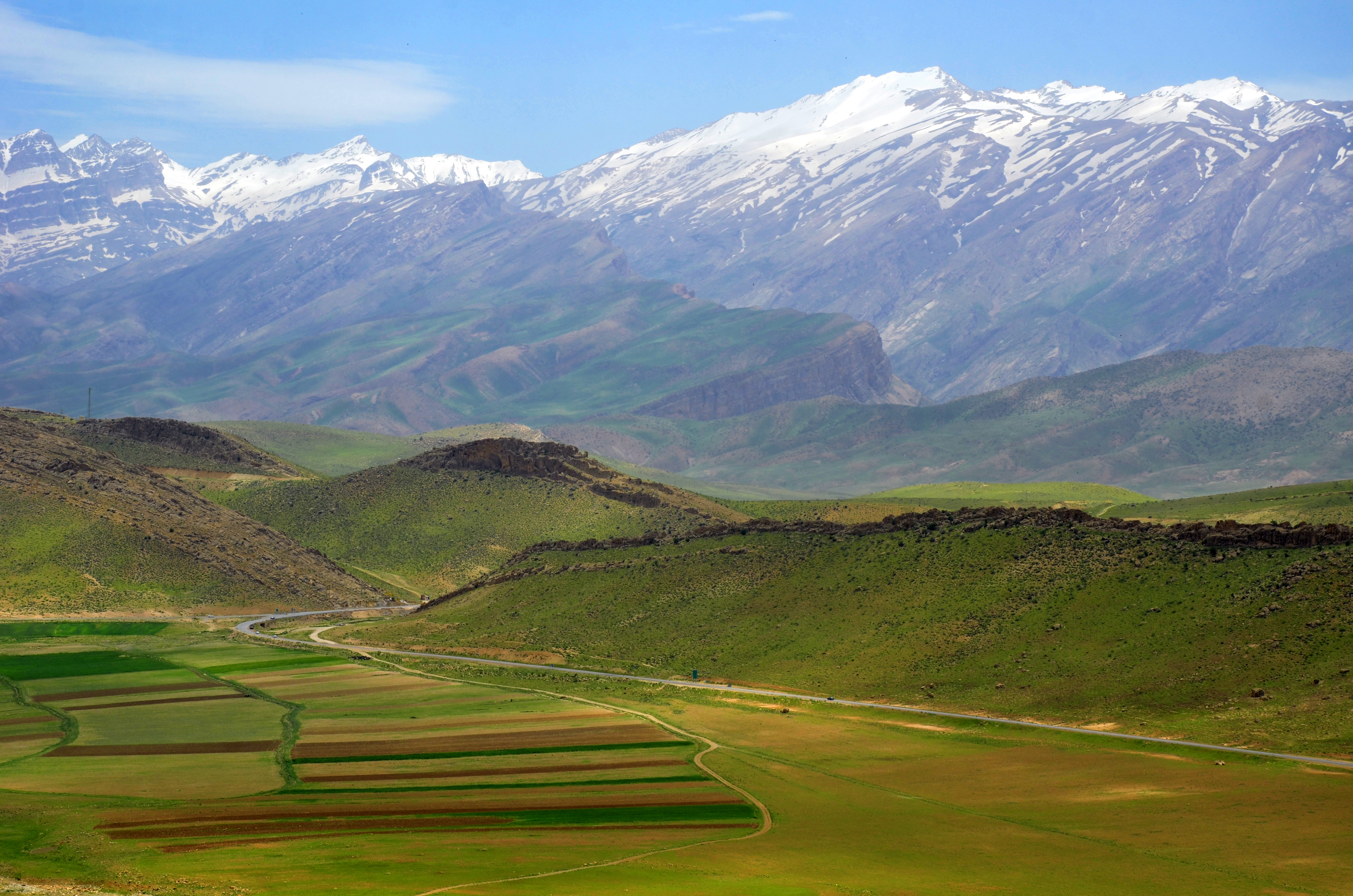|
Amardos
Amardus or Mardus () was a river of Media, mentioned by Ammianus Marcellinus in his confused description of the Persian provinces and by Ptolemy places it in Media, and if we take his numbers as correct, its source is in the Zagrus. The river flows north, and enters the southern coast of the Caspian. William Smith equates the river to the modern Sefīd-Rūd river. As Ptolemy places the Amardi in Amol Amol ( ; ) is a city in the Central District (Amol County), Central District of Amol County, Mazandaran province, Mazandaran province, Iran, serving as capital of both the county and the district. Amol is located on the Haraz River bank. It is ... round the south coast of the Caspian and extending into the interior, we may suppose that they were once at least situated on and about this river. References Rivers of Iran Classical geography {{Iran-river-stub ... [...More Info...] [...Related Items...] OR: [Wikipedia] [Google] [Baidu] |
Amardi
The Amardians, widely referred to as the Amardi (and sometimes Mardi), were an ancient Iranian tribe living along the mountainous region bordering the Caspian Sea to the north, to whom the Iron Age culture at Marlik is attributed. They are said to be related to, or the same tribe as, the Dahae and Sacae. That is to say, they were Scythian. Herodotus mentions a tribe with a similar name as one of the ten to fifteen Persian tribes in Persis. They lived in the valleys in between the Susis and Persis, in what is now southwestern Iran. The southern Mardi are described by Nearchus as one of the four predatory mountain peoples of the southwest, along with the Susians, Uxii, and Elymaeans. Of these four nomadic groups, they were the only tribe linguistically Iranian. Etymology The term ''Mardi'' comes from the Old Iranian word for "man" ( ; from Proto-Indo-European ''*mr̥tós'', "mortal"). Richard N. Frye believe that the name of the city of Amol is rooted in the word ''A ... [...More Info...] [...Related Items...] OR: [Wikipedia] [Google] [Baidu] |
Sefid-Rud
The Sepid-Rud (, ) (also known as Sefid-Rud) is a river, approximately long, rising in the Alborz mountain range of northwestern Iran and flowing generally northeast to empty into the Caspian Sea at Rasht. Names Other names and transcriptions include Sepīd-Rūd, Sefidrud, Sefidrood, Sepidrood, and Sepidrud. Above Manjil, "Long Red River".Fortescue, L. S. (April 1924) "The Western Elburz and Persian Azerbaijan" ''The Geographical Journal'' 63(4): pp. 301-315, p.310Rawlinson, H. C. (1840) "Notes on a Journey from Tabríz, Through Persian Kurdistán, to the Ruins of Takhti-Soleïmán, and from Thence by Zenján and Ṭárom, to Gílán, in October and November, 1838; With a Memoir on the Site of the Atropatenian Ecbatana" ''Journal of the Royal Geographical Society of London'' 10: pp. 1-64, p. 64 William Smith equated the river with the Amardus () or Mardus (Μάρδος) river of antiquity. The river is historically famous for its abundant fish, especially the Caspian trout, ' ... [...More Info...] [...Related Items...] OR: [Wikipedia] [Google] [Baidu] |
Sefīd-Rūd
The Sepid-Rud (, ) (also known as Sefid-Rud) is a river, approximately long, rising in the Alborz mountain range of northwestern Iran and flowing generally northeast to empty into the Caspian Sea at Rasht. Names Other names and transcriptions include Sepīd-Rūd, Sefidrud, Sefidrood, Sepidrood, and Sepidrud. Above Manjil, "Long Red River".Fortescue, L. S. (April 1924) "The Western Elburz and Persian Azerbaijan" ''The Geographical Journal'' 63(4): pp. 301-315, p.310Rawlinson, H. C. (1840) "Notes on a Journey from Tabríz, Through Persian Kurdistán, to the Ruins of Takhti-Soleïmán, and from Thence by Zenján and Ṭárom, to Gílán, in October and November, 1838; With a Memoir on the Site of the Atropatenian Ecbatana" ''Journal of the Royal Geographical Society of London'' 10: pp. 1-64, p. 64 William Smith equated the river with the Amardus () or Mardus (Μάρδος) river of antiquity. The river is historically famous for its abundant fish, especially the Caspian trou ... [...More Info...] [...Related Items...] OR: [Wikipedia] [Google] [Baidu] |
Media (region)
Media (, Middle Persian: ''Mād'') is an Iron Age region of north-western Iran, best known for having been the political and cultural base of the Medes. During the Achaemenid period, it comprised present-day Iranian Azerbaijan, Iranian Kurdistan and western Tabaristan. As a satrapy under Achaemenid rule, it would eventually encompass a wider region, stretching to southern Dagestan in the north. However, after the wars of Alexander the Great, the northern parts were separated due to the Partition of Babylon and became known as ''Atropatene'', while the remaining region became known as ''Lesser Media''. History Under the Medes In 678 BC, Deioces united the Medes, Median tribes of Media and made the first Iran, Iranian Empire. His grandson Cyaxares managed to unite all Iranian peoples, Iranian tribes of History of Iran, Ancient Iran and made his empire a major power. When Cyaxares died he was succeeded by his son, Astyages, who was the last king of the Median Empire. Under the Ac ... [...More Info...] [...Related Items...] OR: [Wikipedia] [Google] [Baidu] |
Iran
Iran, officially the Islamic Republic of Iran (IRI) and also known as Persia, is a country in West Asia. It borders Iraq to the west, Turkey, Azerbaijan, and Armenia to the northwest, the Caspian Sea to the north, Turkmenistan to the northeast, Afghanistan to the east, Pakistan to the southeast, and the Gulf of Oman and the Persian Gulf to the south. With a Ethnicities in Iran, multi-ethnic population of over 92 million in an area of , Iran ranks 17th globally in both List of countries and dependencies by area, geographic size and List of countries and dependencies by population, population. It is the List of Asian countries by area, sixth-largest country entirely in Asia and one of the world's List of mountains in Iran, most mountainous countries. Officially an Islamic republic, Iran is divided into Regions of Iran, five regions with Provinces of Iran, 31 provinces. Tehran is the nation's Capital city, capital, List of cities in Iran by province, largest city and financial ... [...More Info...] [...Related Items...] OR: [Wikipedia] [Google] [Baidu] |
Dionysius Periegetes
Dionysius Periegetes (, literally Dionysius the Voyager or Traveller, often Latinized to ''Dionysius Periegeta''), also known as Dionysius of Alexandria or Dionysius the African,''Encyclopædia Britannica'', 4th edition, 1810, 9''506/ref> was the author of a description of the then-known world in Greek hexameter verse. He is believed to have been from Alexandria and to have lived around the time of Hadrian (r. 117–138), though some date his lifetime as late as the end of the 3rd century. The work enjoyed popularity in ancient times as a schoolbook. It was translated into Latin by Rufius Festus Avienius, and by the grammarian Priscian. Archbishop Eustathius of Thessalonica wrote a commentary on his work for John Doukas. References Editions and translations * * *: reprinted Hildesheim: Olms, 1974 (this book contains also Eustathius' comment, the scholia, Avienius' ''Descriptio orbis terrarum'' and Priscian's ''Periegesis''). *: reprinted Hildesheim: Olms, 1974 . ... [...More Info...] [...Related Items...] OR: [Wikipedia] [Google] [Baidu] |
Ammianus Marcellinus
Ammianus Marcellinus, occasionally anglicized as Ammian ( Greek: Αμμιανός Μαρκελλίνος; born , died 400), was a Greek and Roman soldier and historian who wrote the penultimate major historical account surviving from antiquity (preceding Procopius). Written in Latin and known as the '' Res gestae'', his work chronicled the history of Rome from the accession of Emperor Nerva in 96 to the death of Valens at the Battle of Adrianople in 378. Only the sections covering the period 353 to 378 survive. Biography Ammianus was born in the East Mediterranean, possibly in Syria or Phoenicia, around 330, into a noble family of Greek origin. Since he calls himself ''Graecus'' ( Greek), he was most likely born in a Greek-speaking area of the empire. His native language was Greek, but he also knew Latin. The surviving books of his history cover the years 353 to 378. Ammianus began his career as a military officer in the Praetorian Guard, where he gained firsthand exper ... [...More Info...] [...Related Items...] OR: [Wikipedia] [Google] [Baidu] |
Ptolemy
Claudius Ptolemy (; , ; ; – 160s/170s AD) was a Greco-Roman mathematician, astronomer, astrologer, geographer, and music theorist who wrote about a dozen scientific treatises, three of which were important to later Byzantine science, Byzantine, Islamic science, Islamic, and Science in the Renaissance, Western European science. The first was his astronomical treatise now known as the ''Almagest'', originally entitled ' (, ', ). The second is the ''Geography (Ptolemy), Geography'', which is a thorough discussion on maps and the geographic knowledge of the Greco-Roman world. The third is the astrological treatise in which he attempted to adapt horoscopic astrology to the Aristotelian physics, Aristotelian natural philosophy of his day. This is sometimes known as the ' (, 'On the Effects') but more commonly known as the ' (from the Koine Greek meaning 'four books'; ). The Catholic Church promoted his work, which included the only mathematically sound geocentric model of the Sola ... [...More Info...] [...Related Items...] OR: [Wikipedia] [Google] [Baidu] |
Zagros Mountains
The Zagros Mountains are a mountain range in Iran, northern Iraq, and southeastern Turkey. The mountain range has a total length of . The Zagros range begins in northwestern Iran and roughly follows Iran's western border while covering much of southeastern Turkey and northeastern Iraq. From this border region, the range continues southeast to the waters of the Persian Gulf. It spans the southern parts of the Armenian highlands, and the whole length of the western and southwestern Iranian plateau, ending at the Strait of Hormuz. The highest point is Mount Dena, at . Geology The Zagros fold and thrust belt was mainly formed by the collision of two tectonic plates, the Eurasian Plate and the Arabian Plate. This collision mainly happened during the Miocene (about 25–5 mya or million years ago) and folded the entirety of the rocks that had been deposited from the Paleozoic (541–242 mya) to the Cenozoic (66 mya – present) in the passive continental margin on the Ar ... [...More Info...] [...Related Items...] OR: [Wikipedia] [Google] [Baidu] |
Caspian Sea
The Caspian Sea is the world's largest inland body of water, described as the List of lakes by area, world's largest lake and usually referred to as a full-fledged sea. An endorheic basin, it lies between Europe and Asia: east of the Caucasus, west of the broad steppe of Central Asia, south of the fertile plains of Southern Russia in Eastern Europe, and north of the mountainous Iranian Plateau. It covers a surface area of (excluding the highly saline lagoon of Garabogazköl to its east), an area approximately equal to that of Japan, with a volume of . It has a salinity of approximately 1.2% (12 g/L), about a third of the salinity of average seawater. It is bounded by Kazakhstan to the northeast, Russia to the northwest, Azerbaijan to the southwest, Iran to the south, and Turkmenistan to the southeast. The name of the Caspian Sea is derived from the ancient Iranian peoples, Iranic Caspians, Caspi people. The sea stretches from north to south, with an average width of . Its gr ... [...More Info...] [...Related Items...] OR: [Wikipedia] [Google] [Baidu] |
William Smith (lexicographer)
Sir William Smith (20 May 1813 – 7 October 1893) was an English lexicographer. He became known for his advances in the teaching of Greek and Latin in schools. Early life Smith was born in Municipal Borough of Enfield, Enfield in 1813 to Nonconformist (Protestantism), Nonconformist parents. He attended the Madras House school of John Allen (religious writer), John Allen in Hackney. Originally destined for a theological career, he instead became Articled clerk, articled to a solicitor. Meanwhile, he taught himself classics in his spare time, and when he entered University College London carried off both the Greek and Latin prizes. He was entered at Gray's Inn in 1830, but gave up his legal studies for a post at University College School and began to write on classical subjects. Lexicography Smith next turned his attention to lexicography. His first attempt was ''A Dictionary of Greek and Roman Antiquities'', which appeared in 1842, the greater part being written by him. Then f ... [...More Info...] [...Related Items...] OR: [Wikipedia] [Google] [Baidu] |
Amol
Amol ( ; ) is a city in the Central District (Amol County), Central District of Amol County, Mazandaran province, Mazandaran province, Iran, serving as capital of both the county and the district. Amol is located on the Haraz River bank. It is situated less than south of the Caspian Sea and less than north of the Alborz mountains. It is northeast of Tehran, and west of the provincial capital, Sari, Iran, Sari. It is one of the oldest cities in Iran, and a historic city, with its foundation dating back to the Amardi tribe, who inhabited the region in the Iron Age. Amol is the center of industry and culture of Mazandaran, the rice capital of Iran, and one of the most important cities of the transportation, agriculture, and tourism industries in Iran. It is known as the ''History, Science and Philosophy city'', ''City that does not die'' and ''Hezar Sangar city''. History Pre-Islamic era According to the city government, the name is derived from ''Amardi'', a tribe mentioned ... [...More Info...] [...Related Items...] OR: [Wikipedia] [Google] [Baidu] |









